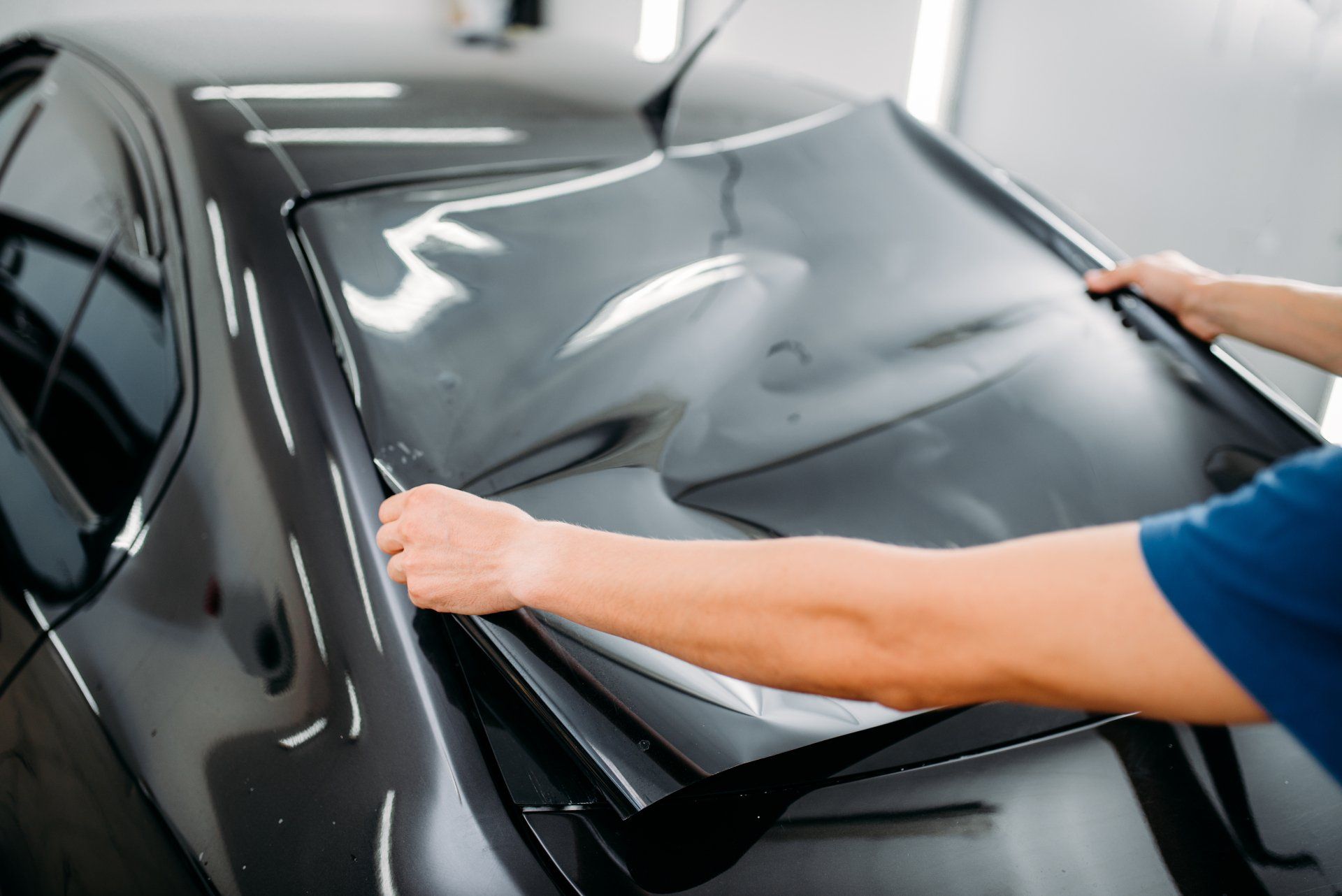Why Window Tinting is Essential for Protecting Your Car's Inside
Why Window Tinting is Essential for Protecting Your Car's Inside
Blog Article
The Process of Expert Window Tinting Explained
Comprehending the procedure of expert home window tinting requires an admiration for the intricacies included in guaranteeing both visual allure and useful excellence. From picking the right movie type to the precise preparation of home windows, each step plays an essential role in achieving a remarkable application. Adhering to these preliminary prep work, the cautious cutting and application of the film need precision to avoid blemishes. Nevertheless, the last assessment and guidance on maintenance continue to be paramount for long-lasting fulfillment. What aspects contribute to the total effectiveness of the tinting process, and how can they influence both looks and performance?
Choosing the Right Window Movie
The initial consideration is the type of film, which can range from dyed, metalized, to ceramic films (window tinting). Dyed movies primarily offer privacy and aesthetic enhancement, while metalized films reflect warm and UV rays, improving power performance.
Following, take into consideration the movie's Visible Light Transmission (VLT) percent, which identifies just how much light goes into the room. A reduced VLT gives better personal privacy and warmth denial however might minimize natural light dramatically. In addition, the movie's solar warm gain coefficient (SHGC) is crucial; a lower SHGC indicates better thermal efficiency, assisting to preserve interior convenience.

Preparing the Windows
Once the appropriate window film has been picked, the following step is thoroughly preparing the windows for installment. This prep work is crucial for achieving optimum bond and guaranteeing a flawless appearance post-installation.
The initial task entails cleaning up the windows thoroughly (window tinting). A premium glass cleaner is crucial, ideally one that is ammonia-free to avoid destructive any home window seals or color materials. Utilizing a lint-free towel or paper towels, service technicians should eliminate any kind of dust, dirt, or grease, paying special focus to the edges and corners where particles frequently accumulates

Cutting the Film
A precise approach to reducing the film is crucial for making sure a best fit on the ready home windows. This step calls for both skill and focus to detail, as errors can lead to unsightly spaces or overlaps that concession the aesthetic and practical qualities of the tint.
Prior to reducing, the professional ought to gauge the window measurements properly, representing any type of distinct shapes or shapes. It is advisable to utilize high-quality window movie, as this product tends to be much more flexible throughout the cutting process. The movie is generally laid level on a clean, smooth surface, and a sharp utility blade is used to ensure clean edges.
To attain optimum results, numerous experts make use of templates created from previous setups or make use of software to develop precise patterns. A common technique involves adding an additional margin to the template, permitting modifications during the application phase.
Additionally, reducing the movie in a controlled environment minimizes the risk of contaminants impacting the adhesive side. By adhering to these careful techniques, home window tinting specialists can ensure that the movie not just fits effortlessly yet additionally does successfully in time, enhancing both look and performance.
Applying the Tint
After meticulously reducing the movie to the right dimensions, the Go Here next step entails using the article tint to the window surface. This procedure starts with making sure that the window is clean and without any kind of dirt, debris, or deposits that can impact attachment. A specific cleaning solution is typically utilized, adhered to by detailed drying out with a lint-free towel.
When the surface is prepared, the installer will carefully place the tint movie versus the glass. It is necessary to align the film accurately to stay clear of misplacement, as any mistakes can lead to an unprofessional look. To promote this, the installer may utilize a light haze of application solution on the glue side of the film, enabling slight repositioning if essential.
Utilizing a squeegee, the installer will then start to press the film onto the glass, functioning from the center in an outward direction to get rid of air bubbles and ensure a company bond. This strategy is vital, as it assures a smooth and flawless surface. Throughout the application, interest to detail is important to stop creases or blemishes, making certain that the tint not just enhances aesthetic appeals but additionally gives the preferred performance.
Final Examination and Care
The last inspection is an essential action in the window tinting procedure, making certain that the installation fulfills both aesthetic and practical criteria. Throughout this phase, professionals thoroughly check out the installed color for any kind of blemishes, such as bubbles, creases, or misalignments. A complete analysis also includes examining the adherence of the movie to the glass, as well as its uniformity and overall appearance.
After the evaluation, appropriate treatment and upkeep guidelines are provided to the client. It is important to notify them regarding the suggested timeline for cleaning the colored home windows, typically advising a wait of at the very least 1 month after installation to permit the glue to cure completely. Clients ought to be educated on suitable cleansing items and strategies, emphasizing the avoidance of ammonia-based cleaners that can damage the color.
In addition, experts must encourage clients on the relevance of normal upkeep to extend the life of the tint. This consists of routine checks for signs of wear or damage and responding without delay to any kind of problems. By guaranteeing visit an extensive last examination and supplying clear care guidelines, home window tinting experts enhance customer complete satisfaction and the longevity of their work.
Final Thought
The professional home window tinting process encompasses numerous vital steps that ensure top quality outcomes. Selecting the proper film kind, preparing the windows diligently, properly reducing the movie, and using it with precision are essential for attaining a flawless finish. A complete final inspection assurances that all standards are fulfilled, while proper post-installation treatment is essential for preserving the color's longevity and efficiency. Adhering to these procedures inevitably enhances both the visual charm and functionality of the tinted home windows.
Report this page